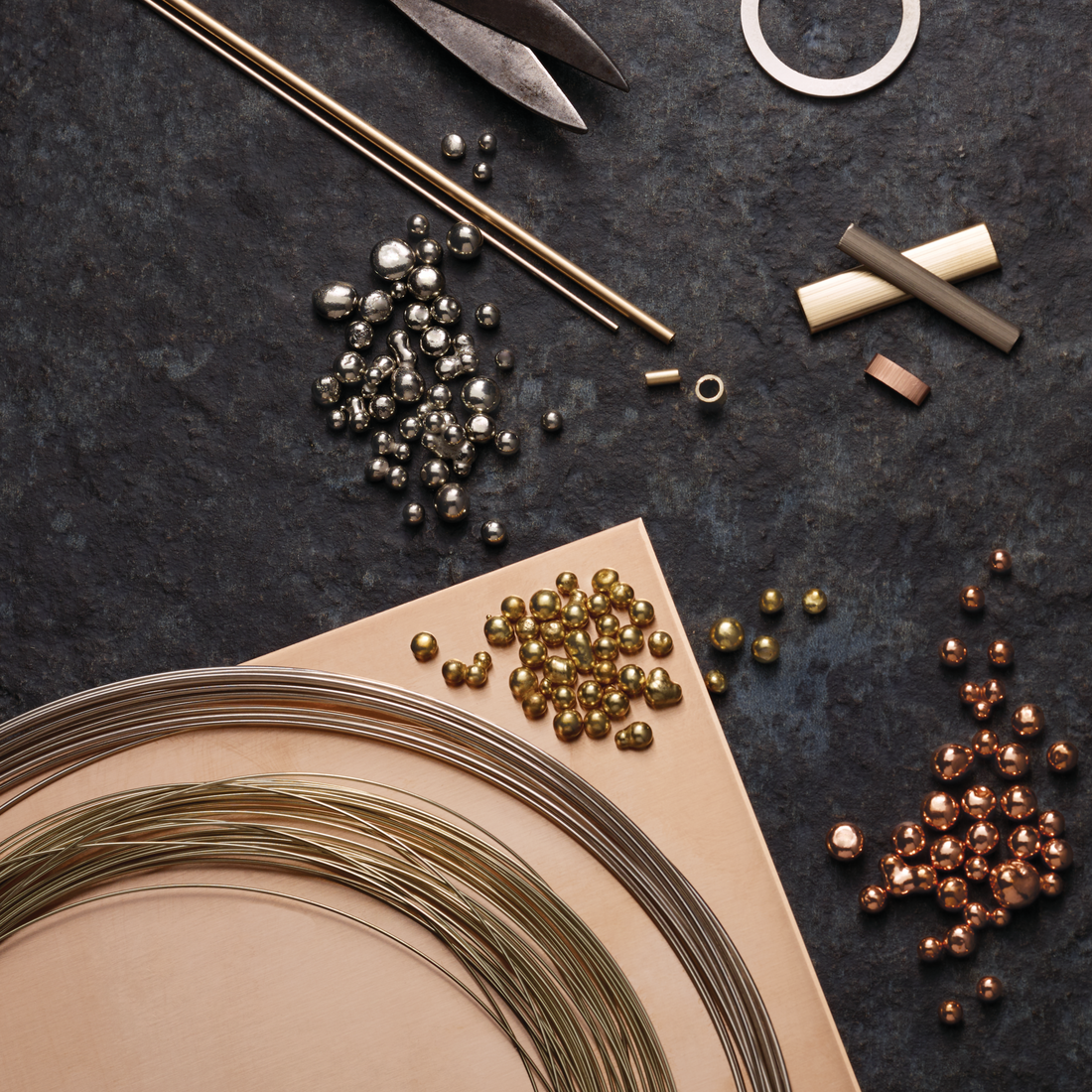
A Guide to Jewelry Metals: Which is right for you?
Share
When it comes to selecting jewelry, the metal it’s made from plays a major role—not only in how it looks but also in how it wears over time, how it feels on your skin, and how it fits your lifestyle. Whether you're shopping for an engagement ring, a statement necklace, or your everyday earrings, understanding the different jewelry metals can help you make the perfect choice.
In this guide, we’ll explore popular jewelry metals, break down their pros and cons, and help you determine which is the right one for you.
Popular Jewelry Metals
1. Gold
Gold is one of the most beloved and traditional metals in jewelry, and for good reason. It’s beautiful, versatile, and long-lasting.
Types of Gold:
- Yellow Gold: Classic and timeless. Made by mixing pure gold with copper and zinc.
- White Gold: Sleek and modern. Created by alloying gold with palladium or nickel and often plated with rhodium for extra shine.
- Rose Gold: Romantic and warm. Made with gold and a higher percentage of copper for a pinkish hue.
Purity Levels:
- 24K Gold: 100% pure, but soft and less suitable for daily wear.
- 18K Gold (75% gold): More durable, rich in color, and great for fine jewelry.
- 14K Gold (58.3% gold): More affordable and durable, ideal for everyday pieces.
- 10K Gold (41.7% gold): Very durable, but less lustrous and may cause skin reactions in sensitive wearers.
Pros:
- Prestigious and valuable
- Doesn’t tarnish
- Wide range of color options
Cons:
- Soft (especially at higher karats)
- Can be pricey
Best For: Those looking for a classic, heirloom-quality piece and who don’t mind investing a bit more.
2. Sterling Silver
Sterling silver (usually marked as 925) is made of 92.5% silver and 7.5% other metals, often copper.
Pros:
- Affordable
- Bright, shiny appearance
- Hypoallergenic for most people
Cons:
- Prone to tarnishing
- Softer and more prone to scratching than gold or platinum
Best For: Trendy pieces, fashion jewelry, or those on a budget.
3. Platinum
Platinum is a rare, naturally white metal known for its durability and purity.
Pros:
- Extremely durable
- Hypoallergenic
- Doesn’t tarnish or fade
Cons:
- Very expensive
- Heavier than other metals
Best For: Engagement rings and pieces that are worn daily and need to withstand wear and tear.
4. Palladium
Palladium is part of the platinum family and offers similar benefits at a lighter weight.
Pros:
- Durable and hard
- Hypoallergenic
- Naturally white, no need for plating
Cons:
- Limited availability
- Can be expensive due to rarity
Best For: Fans of platinum who prefer something lighter and slightly more budget-friendly.
5. Titanium and Tungsten
Titanium and tungsten carbide are strong, modern metals popular in men’s jewelry and alternative wedding bands.
Titanium Pros:
- Lightweight
- Strong and durable
- Hypoallergenic
Tungsten Pros:
- Extremely hard and scratch-resistant
- Affordable
Cons (for both):
- Cannot be resized easily
- Limited styles
- Tungsten can be brittle under extreme pressure
Best For: Active lifestyles, people seeking modern or industrial aesthetics, or anyone needing a tough, low-maintenance option.
6. Stainless Steel
Stainless steel is a modern, affordable choice that’s gaining popularity in fashion jewelry.
Pros:
- Inexpensive
- Resistant to tarnishing and rust
- Durable and low maintenance
Cons:
- Not precious metal (lower resale value)
- Not easily resizable
- Limited styles in high-end collections
Best For: Fashion-forward styles, budget-friendly accessories, and everyday wear.
How to Choose the Right Jewelry Metal
When selecting the right metal, consider these key factors:
1. Skin Sensitivity
If you have sensitive skin, avoid metals with nickel (common in some white gold and silver alloys). Opt for hypoallergenic options like platinum, titanium, or high-karat gold.
2. Lifestyle and Activity Level
Are you hard on your hands? Choose durable metals like platinum, titanium, or 14K gold. Softer metals like 24K gold or silver may not withstand daily wear and tear.
3. Color Preference
Do you prefer warm tones or cool tones? Yellow and rose gold suit warm skin tones, while white gold, silver, and platinum are ideal for cooler undertones.
4. Budget
Set your budget early. If you're looking for investment pieces, gold and platinum are worth the splurge. If you're trying out new trends or need a cost-effective option, sterling silver or stainless steel are great choices.
5. Maintenance Needs
Some metals (like white gold and silver) require more upkeep, such as re-plating or regular polishing. Others, like platinum or stainless steel, are more low maintenance.
Final Thoughts
Choosing the right jewelry metal is about more than just looks—it's about how it fits into your lifestyle, budget, and personal taste. Whether you go for the timeless appeal of gold, the modern resilience of titanium, or the luxurious luster of platinum, the right metal will enhance your jewelry and ensure it lasts a lifetime.
Before you buy, take time to understand the metal's characteristics and care requirements. A little knowledge goes a long way when it comes to picking the perfect piece.
